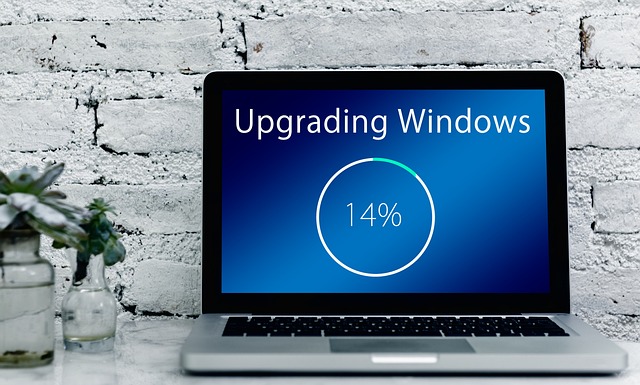Over-the-Air (OTA) updates streamline live software deployment for connected devices like streaming media players and Android TV boxes, ensuring security and up-to-date features. For Android box OS patches, OTA updates are vital to address vulnerabilities and enhance performance, eliminating manual update risks. Live deployments offer many benefits but require strategic planning to avoid network disruptions during peak times while maintaining device security through robust encryption. Implementing structured OTA updates ensures seamless remote system upgrades with minimal user impact, benefiting smart home technology and satellite TV service providers.
Live software deployment, enabled by Over-the-Air (OTA) updates, is transforming how we maintain digital devices. This article delves into the world of OTA updates, exploring key aspects from understanding the technology behind it to its significant advantages in efficiency and user experience. We discuss the challenges and security considerations, offer implementation strategies for successful live deployments, and look ahead at future trends shaping this game-changing technology.
- Understanding Over-the-Air Updates
- Advantages of Live Software Deployment
- Challenges and Security Considerations
- Implementation Strategies for Success
- Future Trends in OTA Updates
Understanding Over-the-Air Updates

Over-the-Air (OTA) updates are a game-changer in the world of live software deployment, especially for connected devices like streaming media players and Android TV boxes. This convenient method allows users to receive system updates without any physical interaction, ensuring their devices remain secure and up-to-date with the latest features and patches. By enabling OTA updates, manufacturers can deliver critical firmware refreshes directly to these devices over a wireless connection, making it an efficient process for both developers and consumers.
When it comes to Android box OS patches, OTA updates play a vital role in addressing security vulnerabilities and improving performance. Device owners no longer need to manually download and install updates, which reduces the risk of human error and ensures a smoother transition to new software versions. This direct broadcast of software refreshes not only enhances the overall user experience but also creates a more robust ecosystem for these connected devices.
Advantages of Live Software Deployment

Live software deployment offers a seamless and efficient way to update devices with new features and improvements. One of its key advantages is the ability to provide over-the-air updates (OTAs), allowing users to receive fresh software without any physical interaction or manual installation. This method, particularly popular in the case of smart TVs and set-top box software refreshes, ensures a consistent user experience across devices. By eliminating the need for users to download and install updates themselves, live deployment streamlines the entire process, saving time and effort.
Additionally, OTAs enable companies to push updates at the best time for their audience, ensuring minimal disruption during peak viewing hours or other critical periods. This strategic approach maximizes user satisfaction while maintaining device performance and security. Live software deployment, therefore, not only keeps devices up-to-date but also fosters a loyal customer base through responsive and proactive maintenance.
Challenges and Security Considerations

Live software deployment brings numerous benefits, but it also presents significant challenges and security considerations. One of the primary hurdles is ensuring seamless over-the-air updates (OTAs) for a vast user base without disrupting their experience. Wireless OS patches, especially when deployed during peak usage hours, can lead to network congestion and downtime, impacting user productivity. Therefore, selecting the best time for air updates becomes crucial.
Security is another vital aspect that cannot be overlooked. Network broadcast software refreshes require robust security measures to prevent unauthorized access and potential data breaches. With increasing sophistication in cyber threats, it’s essential to implement strong encryption, secure communication channels, and regular patch management routines. These steps ensure that devices remain protected during updates, maintaining user trust and the overall integrity of the software deployment process.
Implementation Strategies for Success

Implementing live software deployment requires a strategic approach for success. One key strategy is to leverage Over-the-Air (OTA) updates, which enable seamless and efficient remote system updates. This method eliminates the need for physical installations or manual interventions, making it ideal for modern cable box firmware overhauls. By allowing live TV update installation through OTA, service providers can ensure that every device connected to their network receives the latest software versions simultaneously.
Additionally, a structured rollout plan is essential. This involves segmenting devices into manageable groups based on compatibility and deployment priorities. Gradually deploying updates across these segments ensures minimal disruption and allows for quick identification of any issues that may arise. Regular testing and monitoring throughout the process are also vital to guarantee the stability and functionality of the remote system updates, ensuring a smooth transition to the new software versions.
Future Trends in OTA Updates

The future of Over-the-Air (OTA) updates is set to transform how we maintain and update devices, especially in the realm of smart home technology. As more devices become interconnected, seamless and timely software refreshes are paramount. OTA updates offer a convenient solution, enabling remote installation without user intervention, ensuring devices stay current with the latest features and security patches. This is particularly beneficial for smart home devices, where regular updates can enhance performance, introduce new capabilities, and address potential vulnerabilities.
Satellite TV service providers are also leveraging OTA updates to deliver software refreshes to their customers’ receivers. These satellite TV software updates ensure optimal viewing experiences by incorporating enhancements, bug fixes, and the latest content agreements. By adopting OTA updates, both smart home device manufacturers and satellite TV service providers can provide a more robust, reliable, and secure user experience, ultimately fostering customer satisfaction and loyalty.
Live software deployment, facilitated by Over-the-Air (OTA) updates, offers a seamless and efficient way to keep devices up-to-date. By leveraging OTA technology, developers can provide security patches, feature enhancements, and bug fixes without requiring users to visit physical stores or manually update their devices. While challenges such as security concerns and compatibility issues exist, the advantages of live deployment—including reduced downtime, improved user experience, and cost savings—make it a compelling strategy for modern software distribution. As technology advances, we can expect OTA updates to play an increasingly vital role in the digital landscape, ensuring that our devices remain secure, efficient, and innovative.
